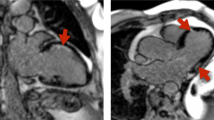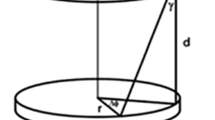Abstract
Background
Barth syndrome (BTHS) is a rare X-linked condition resulting in cardiomyopathy, however; the effects of BTHS on myocardial substrate metabolism and its relationships with cardiac high-energy phosphate metabolism and left ventricular (LV) function are unknown. We sought to characterize myocardial glucose, fatty acid (FA), and leucine metabolism in BTHS and unaffected controls and examine their relationships with cardiac high-energy phosphate metabolism and LV function.
Methods/Results
Young adults with BTHS (n = 14) and unaffected controls (n = 11, Control, total n = 25) underwent bolus injections of 15O-water and 1-11C-glucose, palmitate, and leucine and concurrent positron emission tomography imaging. LV function and cardiac high-energy phosphate metabolism were examined via echocardiography and 31P magnetic resonance spectroscopy, respectively. Myocardial glucose extraction fraction (21 ± 14% vs 10 ± 8%, P = .03) and glucose utilization (828.0 ± 470.0 vs 393.2 ± 361.0 μmol·g−1·min−1, P = .02) were significantly higher in BTHS vs Control. Myocardial FA extraction fraction (31 ± 7% vs 41 ± 6%, P < .002) and uptake (0.25 ± 0.04 vs 0.29 ± 0.03 mL·g−1·min−1, P < .002) were significantly lower in BTHS vs Control. Altered myocardial metabolism was associated with lower cardiac function in BTHS.
Conclusions
Myocardial substrate metabolism is altered and may contribute to LV dysfunction in BTHS.
Clinical Trials #: NCT01625663.


Similar content being viewed by others
Abbreviations
- BTHS:
-
Barth syndrome
- WUSTL:
-
Washington University in St. Louis
- LV:
-
Left ventricular
- 2D:
-
Two-dimensional
- PET:
-
Positron emission tomography
- PCr/ATP:
-
Phosphocreatine to adenosine triphosphate ratio
References
Barth Syndrome Foundation. About Barth syndrome-frequently asked questions. Barth Syndrome Foundation; 2019. https://www.barthsyndrome.org/file_download/inline/8bd9d37d-6449-4687-99b3-7d78202475be. Accessed 24 July 2019.
Clarke SL, Bowron A, Gonzalez IL, et al. Barth syndrome. Orphanet J Rare Dis 2013;8:23.
Barth PG, Scholte HR, Berden JA, et al. An X-linked mitochondrial disease affecting cardiac muscle, skeletal muscle and neutrophil leucocytes. J Neurol Sci 1983;62:327-55.
Bione S, D’Adamo P, Maestrini E, Gedeon AK, Bolhuis PA, Toniolo D. A novel X-linked gene, G4.5. is responsible for Barth syndrome. Nat Genet 1996;12:385-9.
Wang G, McCain ML, Yang L, et al. Modeling the mitochondrial cardiomyopathy of Barth syndrome with induced pluripotent stem cell and heart-on-chip technologies. Nat Med 2014;20:616-23.
Xu Y, Phoon CK, Berno B, et al. Loss of protein association causes cardiolipin degradation in Barth syndrome. Nat Chem Biol 2016;12:641-7.
Zhang M, Mileykovskaya E, Dowhan W. Gluing the respiratory chain together. Cardiolipin is required for supercomplex formation in the inner mitochondrial membrane. J Biol Chem 2002;277:43553-6.
Spencer CT, Bryant RM, Day J, et al. Cardiac and clinical phenotype in Barth syndrome. Pediatrics 2006;118:e337-46.
Kang SL, Forsey J, Dudley D, Steward CG, Tsai-Goodman B. Clinical characteristics and outcomes of cardiomyopathy in Barth syndrome: The UK experience. Pediatr Cardiol 2016;37:167-76.
Bashir A, Bohnert KL, Reeds DN, et al. Impaired cardiac and skeletal muscle bioenergetics in children, adolescents, and young adults with Barth syndrome. Physiol Rep 2017. https://doi.org/10.14814/phy2.13130.
Spencer CT, Byrne BJ, Bryant RM, et al. Impaired cardiac reserve and severely diminished skeletal muscle O(2) utilization mediate exercise intolerance in Barth syndrome. Am J Physiol Heart Circ Physiol 2011;301:H2122-9.
Cade WT, Bohnert KL, Peterson LR, et al. Blunted fat oxidation upon submaximal exercise is partially compensated by enhanced glucose metabolism in children, adolescents and young adults with Barth syndrome. J Inherit Metab Dis 2019;42:480-93.
Davila-Roman VG, Vedala G, Herrero P, et al. Altered myocardial fatty acid and glucose metabolism in idiopathic dilated cardiomyopathy. J Am Coll Cardiol 2002;40:271-7.
Tuunanen H, Engblom E, Naum A, et al. Decreased myocardial free fatty acid uptake in patients with idiopathic dilated cardiomyopathy: Evidence of relationship with insulin resistance and left ventricular dysfunction. J Card Fail 2006;12:644-52.
Peterson MB, Mead RJ, Welty JD. Free amino acids in congestive heart failure. J Mol Cell Cardiol 1973;5:139-47.
Lai L, Leone TC, Keller MP, et al. Energy metabolic reprogramming in the hypertrophied and early stage failing heart: A multisystems approach. Circ Heart Fail 2014;7:1022-31.
Sansbury BE, DeMartino AM, Xie Z, et al. Metabolomic analysis of pressure-overloaded and infarcted mouse hearts. Circ Heart Fail 2014;7:634-42.
Cade WT, Spencer CT, Reeds DN, et al. Substrate metabolism during basal and hyperinsulinemic conditions in adolescents and young-adults with Barth syndrome. J Inherit Metab Dis 2013;36:91-101.
Lang RM, Bierig M, Devereux RB, et al. Recommendations for chamber quantification: A report from the American Society of Echocardiography’s Guidelines and Standards Committee and the Chamber Quantification Writing Group, developed in conjunction with the European Association of Echocardiography, a branch of the European Society of Cardiology. J Am Soc Echocardiogr 2005;18:1440-63.
Wallimann T, Wyss M, Brdiczka D, Nicolay K, Eppenberger HM. Intracellular compartmentation, structure and function of creatine kinase isoenzymes in tissues with high and fluctuating energy demands: The ‘phosphocreatine circuit’ for cellular energy homeostasis. Biochem J 1992;281:21-40.
Naressi A, Couturier C, Devos JM, et al. Java-based graphical user interface for the MRUI quantitation package. MAGMA 2001;12:141-52.
Vanhamme L, van den Boogaart A, Van Huffel S. Improved method for accurate and efficient quantification of MRS data with use of prior knowledge. J Magn Reson 1997;129:35-43.
El-Sharkawy AM, Schar M, Ouwerkerk R, Weiss RG, Bottomley PA. Quantitative cardiac 31P spectroscopy at 3 Tesla using adiabatic pulses. Magn Reson Med 2009;61:785-95.
Bashir A, Gropler R. Reproducibility of creatine kinase reaction kinetics in human heart: A (31)P time-dependent saturation transfer spectroscopy study. NMR Biomed 2014;27:663-71.
Young ME, Razeghi P, Cedars AM, Guthrie PH, Taegtmeyer H. Intrinsic diurnal variations in cardiac metabolism and contractile function. Circ Res 2001;89:1199-208.
Bergmann SR, Herrero P, Markham J, Weinheimer CJ, Walsh MN. Noninvasive quantitation of myocardial blood flow in human subjects with oxygen-15-labeled water and positron emission tomography. J Am Coll Cardiol 1989;14:639-52.
Herrero P, Weinheimer CJ, Dence C, Oellerich WF, Gropler RJ. Quantification of myocardial glucose utilization by PET and 1-carbon-11-glucose. J Nucl Cardiol 2002;9:5-14.
Bergmann SR, Weinheimer CJ, Markham J, Herrero P. Quantitation of myocardial fatty acid metabolism using PET. J Nucl Med 1996;37:1723-30.
Tuunanen H, Engblom E, Naum A, et al. Free fatty acid depletion acutely decreases cardiac work and efficiency in cardiomyopathic heart failure. Circulation 2006;114:2130-7.
Kolwicz SC Jr, Olson DP, Marney LC, Garcia-Menendez L, Synovec RE, Tian R. Cardiac-specific deletion of acetyl CoA carboxylase 2 prevents metabolic remodeling during pressure-overload hypertrophy. Circ Res 2012;111:728-38.
He L, Kim T, Long Q, et al. Carnitine palmitoyltransferase-1b deficiency aggravates pressure overload-induced cardiac hypertrophy caused by lipotoxicity. Circulation 2012;126:1705-16.
Jaswal JS, Keung W, Wang W, Ussher JR, Lopaschuk GD. Targeting fatty acid and carbohydrate oxidation—A novel therapeutic intervention in the ischemic and failing heart. Biochim Biophys Acta 2011;1813:1333-50.
Fiolet JW, Baartscheer A. Cellular calcium homeostasis during ischemia; a thermodynamic approach. Cardiovasc Res 2000;45:100-6.
Suzuki-Hatano S, Saha M, Soustek MS, et al. AAV9-TAZ gene replacement ameliorates cardiac TMT proteomic profiles in a mouse model of Barth syndrome. Mol Ther Methods Clin Dev 2019;13:167-79.
Schweitzer GG, Finck BN, Cade WT. Increased anaerobic metabolism during exercise in Barth syndrome may result from augmented liver glycogenolysis. In: International scientific, medical, and family conference. Clearwater Beach, FL: Barth Syndrome Foundation; 2018 (Abstract).
Kelly DP, Mendelsohn NJ, Sobel BE, Bergmann SR. Detection and assessment by positron emission tomography of a genetically determined defect in myocardial fatty acid utilization (long-chain acyl-CoA dehydrogenase deficiency). Am J Cardiol 1993;71:738-44.
Bergmann SR, Herrero P, Sciacca R, et al. Characterization of altered myocardial fatty acid metabolism in patients with inherited cardiomyopathy. J Inherit Metab Dis 2001;24:657-74.
Murray AJ, Cole MA, Lygate CA, et al. Increased mitochondrial uncoupling proteins, respiratory uncoupling and decreased efficiency in the chronically infarcted rat heart. J Mol Cell Cardiol 2008;44:694-700.
Sluse FE. Uncoupling proteins: Molecular, functional, regulatory, physiological and pathological aspects. Adv Exp Med Biol 2012;942:137-56.
Knottnerus SJG, Bleeker JC, Wust RCI, et al. Disorders of mitochondrial long-chain fatty acid oxidation and the carnitine shuttle. Rev Endocr Metab Disord 2018;19:93-106.
Cleroux J, Van Nguyen P, Taylor AW, Leenen FH. Effects of beta 1- vs. beta 1 + beta 2-blockade on exercise endurance and muscle metabolism in humans. J Appl Physiol (1985) 1989;66:548-54.
Fonseca VA. Effects of beta-blockers on glucose and lipid metabolism. Curr Med Res Opin 2010;26:615-29.
Ichihara K, Neely JR, Siehl DL, Morgan HE. Utilization of leucine by working rat heart. Am J Physiol 1980;239:E430-6.
Vernon HJ, Sandlers Y, McClellan R, Kelley RI. Clinical laboratory studies in Barth syndrome. Mol Genet Metab 2014;112:143-7.
Acknowledgments
We thank the nursing staff at the WUSTL Institute for Clinical and Translational Sciences Clinical Research Unit for their hard work and altruism. We especially thank Kitty Krupp, RN, for her work with study radioisotope tracer administration and blood draws and the staff at the WUSTL CCIR for acquisition of the PET scans. Lastly, we thank the participants and their families for their dedication and effort to travel to St. Louis and participate in this study.
Disclosures
None.
Author information
Authors and Affiliations
Corresponding author
Additional information
Publisher's Note
Springer Nature remains neutral with regard to jurisdictional claims in published maps and institutional affiliations.
Funding
This work was supported by the National Institutes of Health R01HL107406-01, K01EB010171, P30DK056341, P30DK020579, HD007434, S10RR024532, and UL1TR000448 from the National Center for Research Resources and NIH Roadmap for Medical Research. Additional support provided by the Barnes-Jewish Hospital Foundation to the Cardiovascular Imaging and Clinical Research Core Laboratory.
Electronic supplementary material
Below is the link to the electronic supplementary material.
Rights and permissions
About this article
Cite this article
Cade, W.T., Laforest, R., Bohnert, K.L. et al. Myocardial glucose and fatty acid metabolism is altered and associated with lower cardiac function in young adults with Barth syndrome. J. Nucl. Cardiol. 28, 1649–1659 (2021). https://doi.org/10.1007/s12350-019-01933-3
Received:
Accepted:
Published:
Issue Date:
DOI: https://doi.org/10.1007/s12350-019-01933-3




